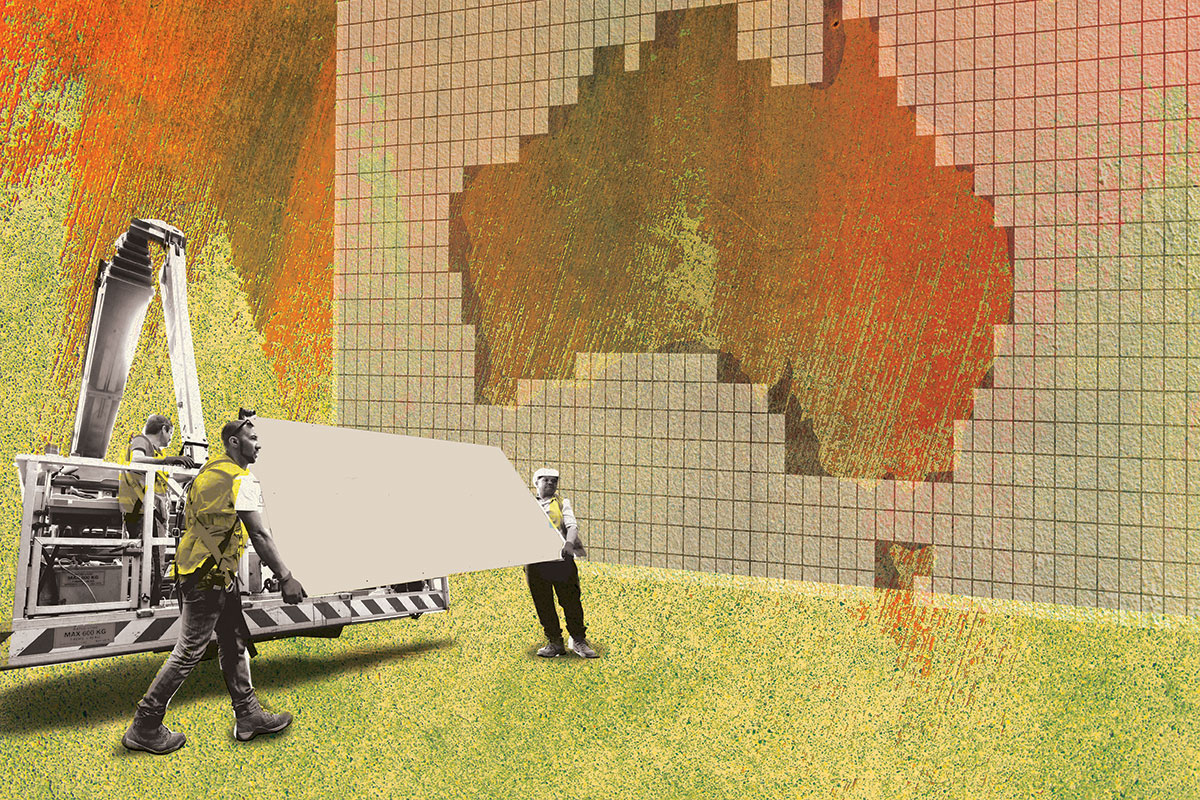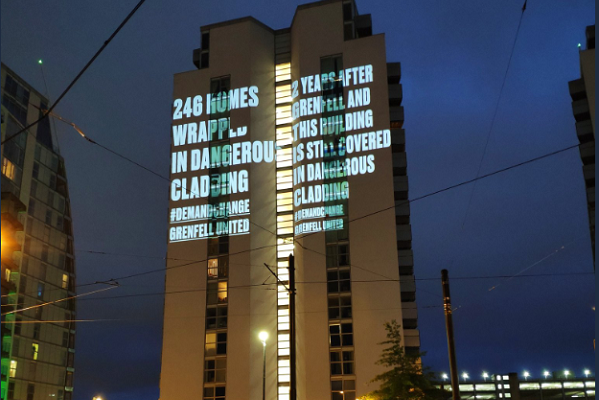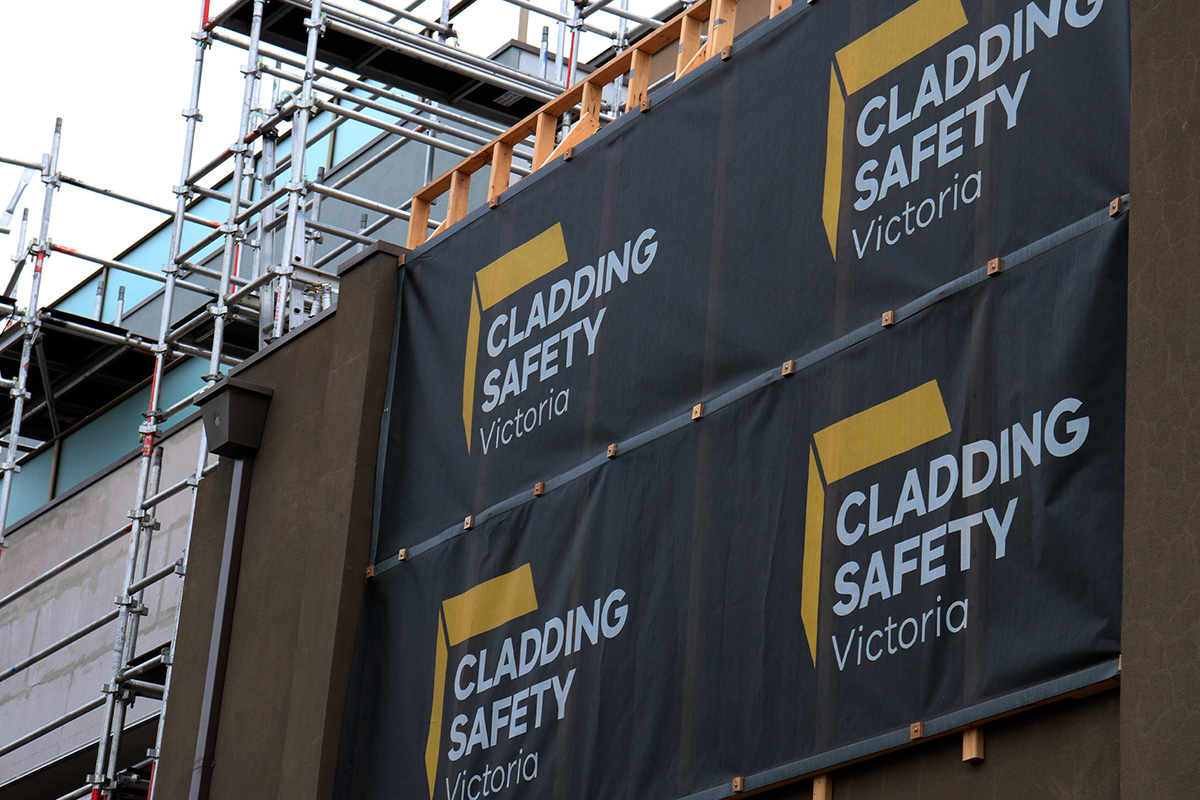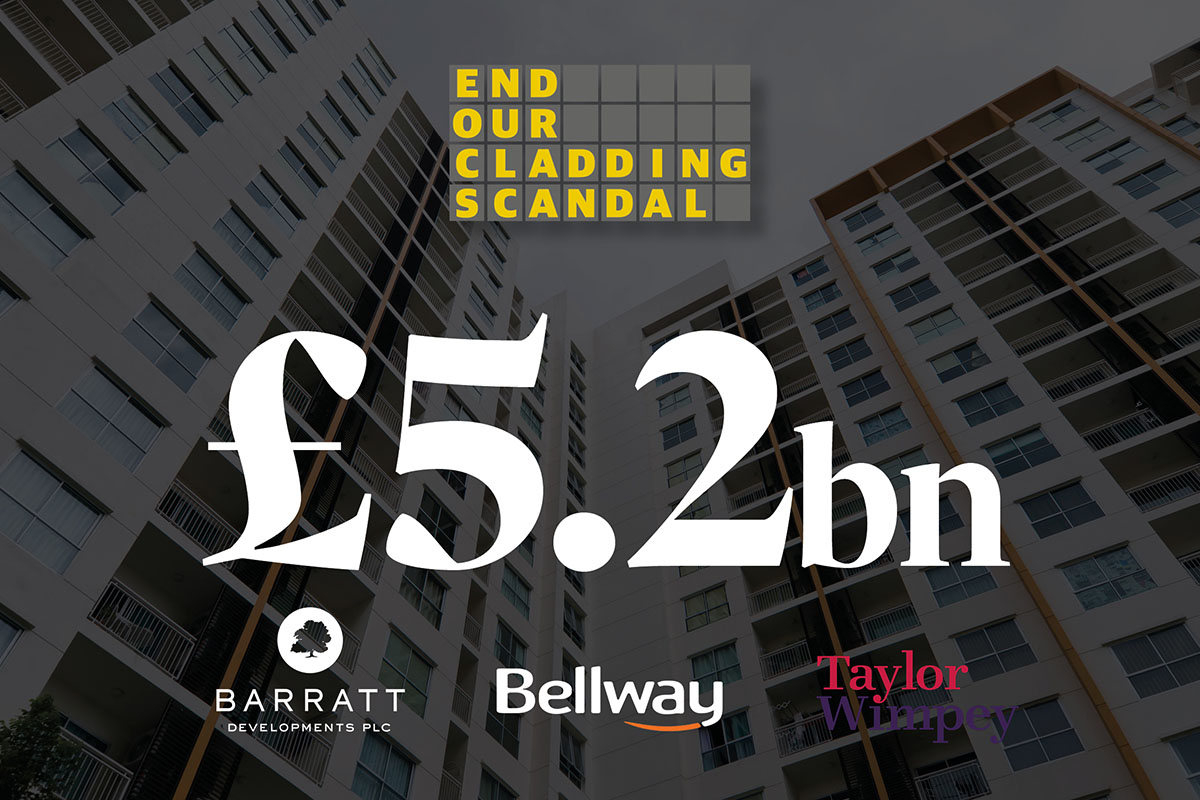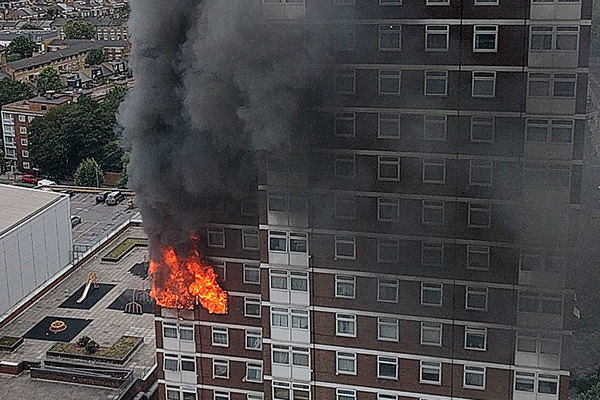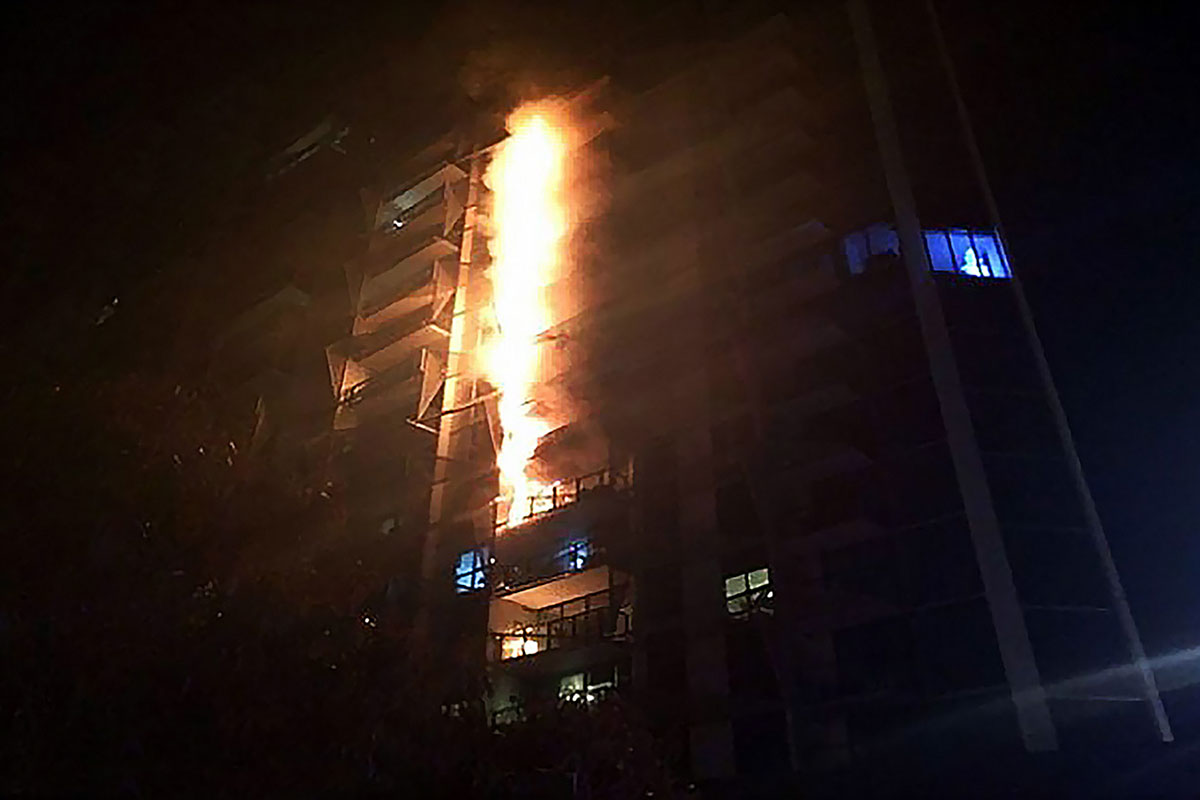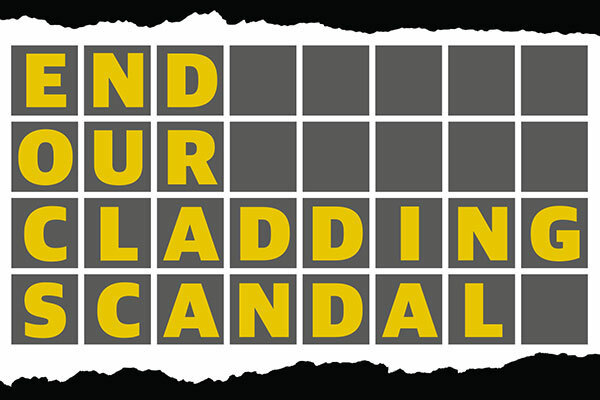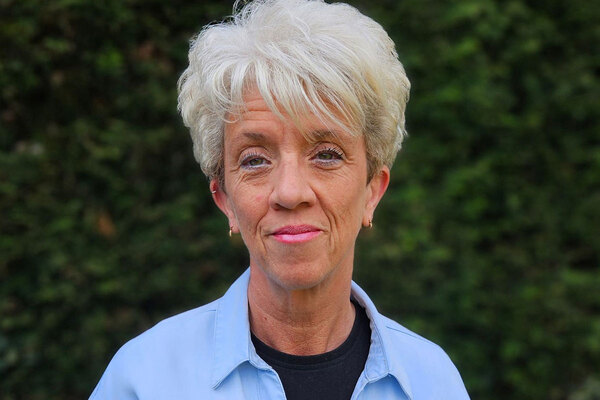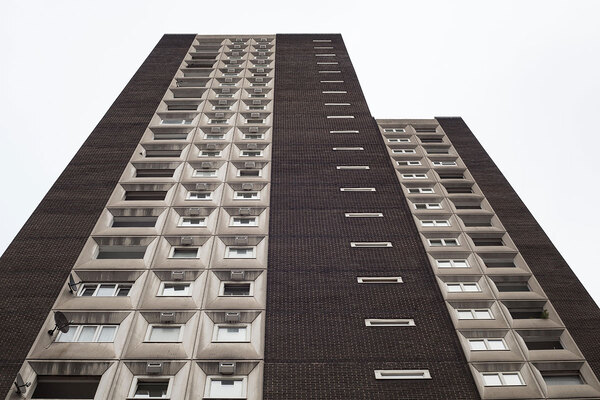The cladding crisis Down Under: what we can learn from the response to Grenfell in Australia
Five years ago a fire spread up Grenfell-style ACM cladding on a high-rise in Melbourne. This prompted an overhaul of the Australian state of Victoria’s building safety regime. Peter Apps finds out what the UK could learn. Pictures by Getty, Jon Heal and the Melbourne Fire Brigade
A routine fire breaks out on the lower floor of a high-rise building and spreads to the aluminium composite material (ACM) cladding system installed as part of its walls. Flames tear up the outside of the building, as horrified witnesses look on in shock.
This is not Grenfell Tower. It is the 23-storey Lacrosse Tower in central Melbourne in November 2014. The spread of the fire is where similarities between London and Melbourne begin – but also where they end.
In Australia, nobody died. All the residents were evacuated safely, assisted by the presence of automatic sprinklers, fire alarm systems and proximity to exits enforced by regulations. In London, with none of these features present, 72 lives were lost.
Different paths have been followed in the aftermath of the fires, too. In both countries hundreds of other buildings with dangerous cladding have been identified. But while Victoria (the Australian state where Melbourne is located) has acted proactively to deal with the issue, in the UK progress has been grindingly slow and disorganised – leaving residents of the affected blocks trapped in dangerous homes.
The upshot is that as things currently stand – just one month before an ill-advised deadline for the completion of remediation work – 318 of the 435 blocks identified as having Grenfell-style cladding have not yet finished remediation work. We have no official figures on the number of buildings with dangerous material of other kinds but it is expected to run into the thousands.
Inside Housing looks at what is happening Down Under and what the UK could learn.
There are two important differences between the starting point of the UK government and the Victorian state. The first is that Victoria had a three-year head start, having begun investigating the issue of dangerous cladding immediately after the Lacrosse fire. The second is that it had better equipment with which to tackle the problem.
In Victoria, a regulator called the Victorian Building Authority (VBA) carries out a number of regulatory functions relating to the built environment. Its key role is the monitoring and registration of building practitioners, but it can also be tasked by the minister with other jobs.
And so, in the aftermath of Lacrosse, the VBA was tasked by the minister to undertake an audit to identify combustible material on buildings in Melbourne. This is already a key difference from the approach in the UK, where no such regulator exists.
The findings from the first Melbourne audit were published in February 2016 and made worrying reading: of the 170 high-rise residential buildings surveyed, 51% had dangerous cladding installed. The risk was thought to be limited: only one building other than Lacrosse was deemed to pose a significant safety issue.
But then Grenfell happened, which changed the picture in Australia as much as it did here. The urgency to fully understand the scale of use of the ACM cladding was increased, as was the need to remove it.
The state government established a cladding taskforce to address the problem three weeks after the fire in London. Alongside the regulator, the taskforce would take responsibility for identifying the buildings with dangerous cladding.
This audit would be thorough. Apartment buildings, hotels, motels and student accommodation of more than three storeys were in scope, as were hospitals, care homes and schools of more than two storeys.
This process involved more than simply counting: first an on-site inspection would be carried out, then an expert panel risk-assessed the building. For those buildings considered dangerous a municipal building surveyor - employed by the state - could issue an emergency order requiring evacuation or immediate works such as additional sprinklers, smoke alarms or partial cladding removal.
A building notice could also issued by the surveyor. This notice requires the building owner to demonstrate why the cladding should not be removed. If they could not, a building order is imposed requiring the removal of all or part of the cladding. If only part of the cladding is to be removed, the building owner is required to satisfy a special court of the safety of the new system. When complete, work is inspected by the municipal surveyor.
This audit produced a comprehensive data set. In total 2,227 buildings were audited, with 1,069 found to have combustible cladding. The rich information gathered allowed the taskforce to prioritise the work: 72 buildings were considered as ‘extreme risk’ and would be attended to first, with 409 considered high risk, 388 moderate and 200 low risk.
Victorian audit in numbers
- 2,227 buildings inspected
- 1,069 found to have combustible cladding
- 72 considered to pose an extreme risk to residents. A further 409 are deemed high risk, 388 moderate risk and 200 low risk
- 50 buildings where immediate action was required to prevent an evacuation order
- Two categories of cladding product which have presented the most significant fire risk: aluminium composite material cladding and extruded polystyrene
This contrasts with the UK system in almost every way conceivable. First, the scope is wider: the UK is only investigating buildings above 18m (around six storeys), only began checking for materials other than ACM this summer, and is a long way from completing this work.
The audit in the UK is also not centrally led – local authorities are only required to ask building owners for the data. This is an approach officials in Victoria have specifically rejected as “prone to delay, limited disclosure, failure to identify cladding and/or malfeasance”.
Next, the interim measures in the UK are far weaker. They are not prescribed by an expert board but, in accordance with official guidance, are left to the building owner which consists of little more than an expensive but potentially ineffective waking watch.
As Grenfell Tower inquiry expert Dr Barbara Lane said, this has not been assessed for each building. She said it was “unclear” how the UK government had reached the position that they are safe to occupy.
But as Jeanette Barbaro, partner at Australian law firm Minter Ellison, explains, interim measures are crucial given the length of time it will take to rectify so many buildings. “The risk management is as important as the rectification itself,” she says. “It’s impossible to rectify a building that is wholly or substantially clad quickly. So what you do pending the rectification in that interim period is really important.”
The 23-storey Lacrosse Tower in Melbourne, Australia, during the blaze in November 2014
This appears particularly relevant considering that all the affected Australian buildings already have sprinklers and fire alarms as standard, while those in the UK do not.
Finally, and perhaps crucially, there has been no prioritisation in the UK. We know how many buildings have ACM, but no distinction has been made between those with a totally enveloping cladding system and those with a decorative patch on the roof.
This means that the market, not building safety, is determining the speed of removal work. That is because there is a limited pool of professionals available to reclad a building. It requires a builder, architect, fire engineer and a certifier, as well as specialist equipment like non-sparking tools.
In Victoria it has been possible to manage this supply chain and ensure it is directed to the buildings most at risk first. In the UK this has not happened.
The issue of cost has also been approached differently in Victoria. In the UK this has been a huge problem: while the government has put up £600m for the specific removal of ACM, there is nothing to assist with the removal of the myriad other dangerous cladding products which need to be taken down or buildings below 18m.
Taskforce approach
A state-wide cladding audit has examined all residential apartments, hotels and student accommodation of three storeys or more – as well as hospitals, schools and care facilities of more than two storeys. This involves:
- Identification and assessment: buildings are inspected on site and an expert panel risk-assesses it and makes recommendations to manage the risk which may include an emergency order. If necessary, an evacuation order will be issued.
- Emergency work undertaken: emergency work may involve additional smoke alarms, the immediate removal of cladding from around exits, turning off electrical cables which run through the cladding, and other measures. All Australian buildings already have fire alarms and sprinklers.
- Rectification planning: a building notice is issued, which requires owners to justify why the cladding does not need to be removed. This is assessed by a special court, the Building Appeals Board.
- Building work undertaken: a building order is issued and the work is carried out.
- Works completed: work is completed, inspected by officials and the building order is cancelled if they are satisfied.
- Funding: the state government has also introduced powers to step into owners’ shoes to pursue builders for compensation through the courts. A new levy will be charged for building permits which will also contribute. Funding will be prioritised for the most at-risk buildings.
In the social sector this has resulted in costs which are affecting the ability of landlords to build new affordable homes. But in the private sector, the consequences have been worse.
Crippling bills are passed down to individual leaseholders, which has led to a mental health crisis among those affected. People cannot sell their homes, so they are trapped in unsafe buildings with unpayable bills hanging over their heads.
In Victoria, the starting position is different. The facade of the apartment tends to be buildings tend to be 'common property' owned by ‘owner corporations’ rather than freehold companies. This simplifies the process in some respects but it does not take away the issue of cost.
The intervention of the government has been twofold. In September last year, measures were passed to introduce state loans for the work which could be repaid via increased council tax bills.
Then, just last month, an act made it through parliament to establish a building safety fund to directly cover the cost in the most seriously affected buildings.
This will not simply be a case of billing the taxpayer, though – the act establishes a new ‘building levy’ which requires builders to make a contribution to the fund to secure a building permit. It also gives the state the power to step into the building owners' shoes in order to pursue the builders through the court and win back any compensation.
Neither of these actions have been introduced in the UK. Instead, ministers have tried to beg and bully building owners to pay, leaving leaseholders to pick up the bill if they say no.
Broadly, the problems in Victoria and the UK seem to have come from a relatively similar place, explains Ms Barbaro. There, like here, performance-based building code which sets various routes to compliance for a cladding system.
In both hemispheres, this code contained requirements about the use of cladding, which have been interpreted as widely as possible to allow the use of combustible materials as cladding. Within the complex chain of professionals involved in building a modern block, no one took responsibility for fire safety. Standards were allowed to slip and buildings became dangerous.
But the responses of the two governments have been very different – and so have the results.
In February, Melbourne got another reminder of the severity of the problem it faces. A flicked cigarette in the Neo 200 building started a fire which spread to the cladding. Again, there were no deaths or serious injuries. Sprinklers and fire alarms again played their part.
In England, there have been more fires too, but the lack of deaths has been much more a result of luck. If there is more tragedy, serious questions will be asked about what has and hasn’t been done since Grenfell to make our buildings safe.
End Our Cladding Scandal: campaign asks
The next government must:
- Create a ‘building safety fund’ to help pay for the necessary remediation work to affected buildings in the social and private sector – not just those with ACM cladding and above 18m
- Set up a taskforce, with the involvement of residents, capable of inspecting buildings, prioritising and ordering work and ensuring leaseholders are protected from unnecessary costs
End Our Cladding Scandal general election campaign: full coverage
The cladding scandal is far from over. Here’s why we need a fresh approach
Click here to read the full story
Ahead of the general election, Inside Housing revisits our national cladding scandal and sets out what needs to be done to prevent any further tragedies. Peter Apps reports.
The cladding crisis Down Under: what we can learn from the response to Grenfell in Australia
Click here to read the full story
Five years ago a fire spread up Grenfell-style ACM cladding on a high-rise in Melbourne. This prompted an overhaul of the Australian state of Victoria’s building safety regime. Peter Apps finds out what the UK could learn.
More than 100,000 buildings outside scope of fire safety measures, minutes reveal
Click here to read the full story
There are more than 100,000 medium-rise homes that fall outside new regulations aimed at making buildings safe in the aftermath of Grenfell, including the ban on combustible cladding, Inside Housing can reveal.
It’s only a matter of time until the next Bolton unless the parties step up to the plate on fire safety
Click here to read the full story
Inside Housing’s new election campaign calls on the main political parties to commit to taking action to prevent what currently seems like an inevitable further tragedy. It’s time for everyone to step up, writes Martin Hilditch.
Leaseholders fear missing out on £200m cladding fund as bidding deadline approaches
Click here to read the full story
Leaseholders living in blocks seeking government funding for the removal of Grenfell-style cladding have raised concerns over meeting the deadline for applications, while criticising the lengthy process being run by the government.
Government refusing to test polystyrene panels, despite request from London boroughs
Click here to read the full story
The government has no further plans to carry out testing of cladding products despite a specific request from London boroughs to test systems comprising polystyrene, a document obtained by Inside Housing has revealed.
